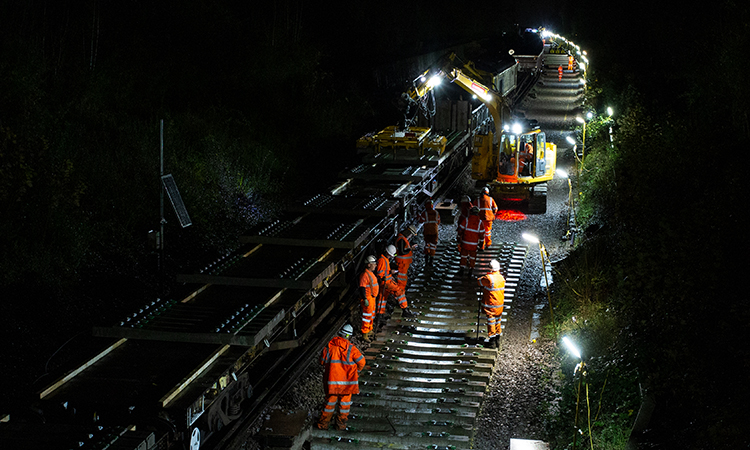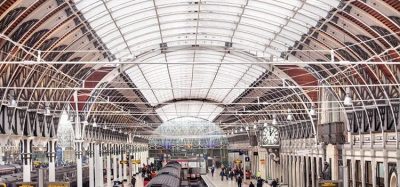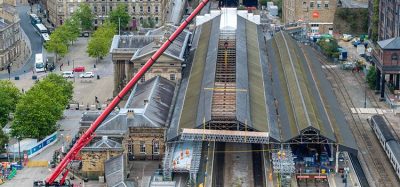Network Rail publish £44 billion five-year plan
Posted: 19 May 2023 | Elliot Robinson (Editorial Assistant - Global Railway Review) | No comments yet
Network Rail’s five-year plan for the railway in England and Wales sees increased investment in tackling climate change and improving train performances.


Credit: Network Rail
Network Rail has published its £44 billion, five-year plan (2024-29, Control Period 7 – CP7) for the railway in England and Wales that sees increased investment in tackling climate change, improving train performance from current levels, investing in things that matter most to passengers and freight users, and making the railway even greener.
In December 2022, the Department for Transport (DfT) published two key documents. One set out what it wanted the railway to deliver (High Level Output Statement – HLOS) and the other, how much funding it was making available (Statement of Funds Available – SoFA). Over the last two years, and more intensively over the past three months, Network Rail has been working on plans to deliver the best railway it can for the amount of money available – £44.1 billion, which, after adjusting for changes in electricity costs, is £1.8 billion more than CP6 (2019-2024).
Whilst funding for enhancements to the railway is no longer included in this funding settlement, the Government has already committed substantial investment – some £96 billion – in the Integrated Rail Plan, with a substantial portion of these funds being delivered in projects during the course of CP7.
Sitting below the national overview, are four more detailed, regional plans for England and Wales, and plans for national functions. Scotland’s Railway continues to align CP7 plans with Scottish Ministers’ HLOS and SoFA, which was published in early February 2023.
Related content you will enjoy:
Images: Network Rail finish reliability upgrade on Norfolk and Suffolk rail lines
Network Rail begin work on new railway footbridge at Strathbungo in Glasgow’s southside
By planning to deliver a more punctual and reliable railway and improving passenger and freight customer experience, the plan for England and Wales focuses on customers:
- Recognising the need to improve performance over the remainder of CP6 and giving passengers and freight users the highest level of train performance possible in CP7
- Renewing lifts and escalators, improving lighting and passenger information systems to improve personal security and safety
- More than doubling investment – to £1.6bn – in tackling climate change, and making the railway more resilient and sustainable. This includes investment in earthworks and drainage renewals, and improvements to capability such as the creation of dedicated earthworks and drainage teams, operational weather expertise, climate change adaptation strategy investment and continued investment in the Weather Risk Taskforce
- The plans also include investment in the reduction of emissions and targeted net-zero initiatives, focussing on meeting Government objectives for biodiversity, air quality and waste
- Focused on value for money by making every penny count and targeting efficiencies of £3.4bn over the period.
Supports all who use the railway:
- Investing in technology and innovation such as installing equipment on trains which monitors infrastructure condition remotely without needlessly sending employees onto the track
- Investing £1.85bn in next-generation signalling that has the ability to improve reliability and train performance.
Supports economic growth and connectivity: the plans include investment in technology and research and development, and will facilitate the introduction of major projects such as Transpennine Route Upgrade, preparing for HS2 and other targeted investment across the country, along with:
- Supporting the continued growth of rail freight through an ambitious but realistic target of 7.5% growth across the network
- Laying the foundations for GBR that will be key to the railway becoming more efficient through reuniting track and train. A reformed railway will see this settlement go further by enabling a simpler, better railway for everyone.
“As we look to the next five years, the Government’s commitment to invest £44 billion in the operations, maintenance and renewal of England and Wales’s railway is a clear indication of the strong economic value rail brings to Britain,” Andrew Haines, Chief Executive for Network Rail, said. “Our plan for CP7 is ambitious, focussed on our passengers and customers and reflects the current complexities and challenges facing the industry. There will no doubt be obstacles ahead and I look forward to working collaboratively with the sector to deliver this plan, reshape the industry and build a railway that is fit for the future.”
Network Rail’s funding is made available from governments over five-year periods, known as control periods, with control period 7 (CP7) starting on 1 April 2024 and running until 2029. The Office of Rail and Road (ORR) will now review this initial strategic business plan and review how it measures up against the Government’s HLOS and SoFA and publish its draft determination on this plan later this year including targets, measures and incentives it will hold Network Rail to deliver over CP7.
Related topics
Cargo, Freight & Heavy-Haul, Funding & Finance, Infrastructure Developments, Passenger Experience/Satisfaction, Regulation & Legislation, Route Development, Station Developments, Sustainability/Decarbonisation
Related organisations
Department for Transport (DfT), Network Rail, Scotland's Railway







